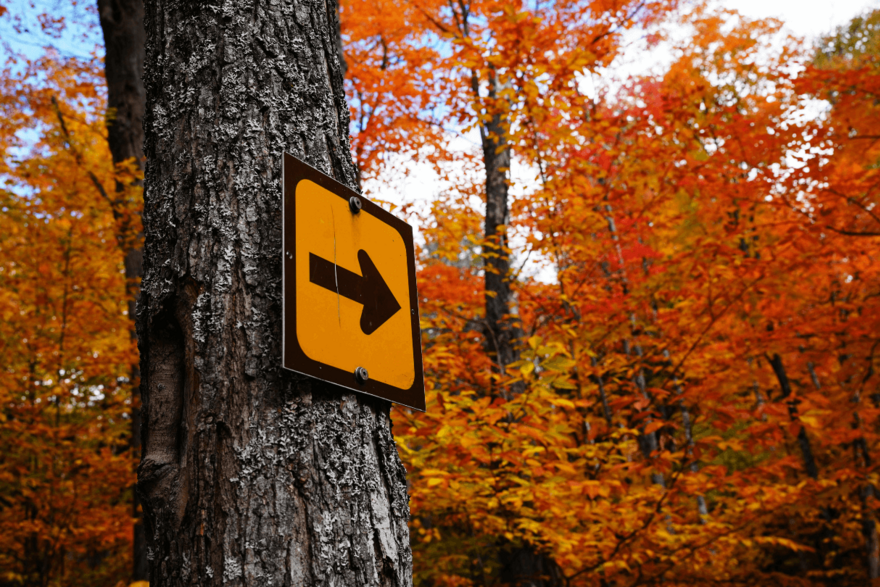Make yourself a map.

So I’ve been walking the local trails at Macaulay Mountain this week. These are paths I’ve hiked for over 15 years. I’ve been through this little chunk of forest in every season, in all kinds of weather.
I pulled into the parking lot on one particularly sunny, warm September afternoon and noticed way more cars than usual. And on the trail, I kept bumping into hikers who were new to the area. Every person I met looked vaguely confused and untethered, and they turned to me with relief, asking:
Do you know if this trail loops back to where we parked?
We couldn’t find the end of the red trail — now the markers say we’re on the yellow trail. When did the red trail stop?
I’m not sure how we got here, but this path looks like it might go up to a lookout point… do you know if there’s a good view on this trail?
How long is this hike?
On Macaulay Mountain, you gotta know: the colours on the trail markers are not reliable. Whoever they hired to mark these trees sure had a lot of fun with spray paint, but they were not trail makers. There is no functional map of the trails in this area.
“Think of the colours as positive affirmations,” I told the hikers. “They’re just here to let you know that you’re hiking, and that you’re probably on a path.”
Then I showed them the way I would take to get back to the parking lot myself. I gave them a short and direct way, and a longer option too, if they had the stamina and desire to meander more.
I have the benefit of knowing where I’m going and choosing my adventure because I know the terrain. I am familiar with the angle of light in different seasons, which helps me know the time. But in my first years living here, I got lost regularly. The spray paint on these trees only means something to me now because I’ve spent so much time lost on these trails, I finally figured out my own internal map.
If you're writing a book, you know this disorientation too.
You’re in a forest, right? You have a character, a setting, an idea of what might happen… kind of. You’re holding it all loosely.
Knowing your terrain comes from walking it. You make creative decisions about your story as you go.
But if you have an outline, you have made yourself a map. So you know where you are in the story! When you’re writing a novel, this helps. It helps so much. I will never write another book without an outline.
For the hikers new to these trails, not knowing where they were, or how far along the trail they’d come, or when it would end — it really got in the way of their hiking enjoyment!
Because while they scratched their heads trying to figure out logistics, all along the trail were these frisky purple asters, their vibrant colour glowing beside stalks of goldenrod. At our feet floated a carpet of wild columbine leaves, bright yellow-green the colour of highlighter markers. The fallen leaves made a satisfying and crunchy sound, while the sun poured down over our skin like warm caramel.
It’s like this for us when we’re writing, too. When you’re confused and disoriented, it can be hard to fully be present for the details.
If you feel disoriented in the creation of your novel, try making yourself a good map of the story.
Seriously. Make an outline.
You don’t have to stick to one trail. You don’t have to take the longest loop. But knowing the terrain means you can have a much more enjoyable time on your journey, and you’ll get to give attention to more cool stuff along the way.
Have you made an outline for your novel yet? How’s it going? If not, what’s stopping you from taking that step?
Please tell me in the comments.
Photo credit (top): Ginny Mu on Unsplash.

0 comments
Leave a comment